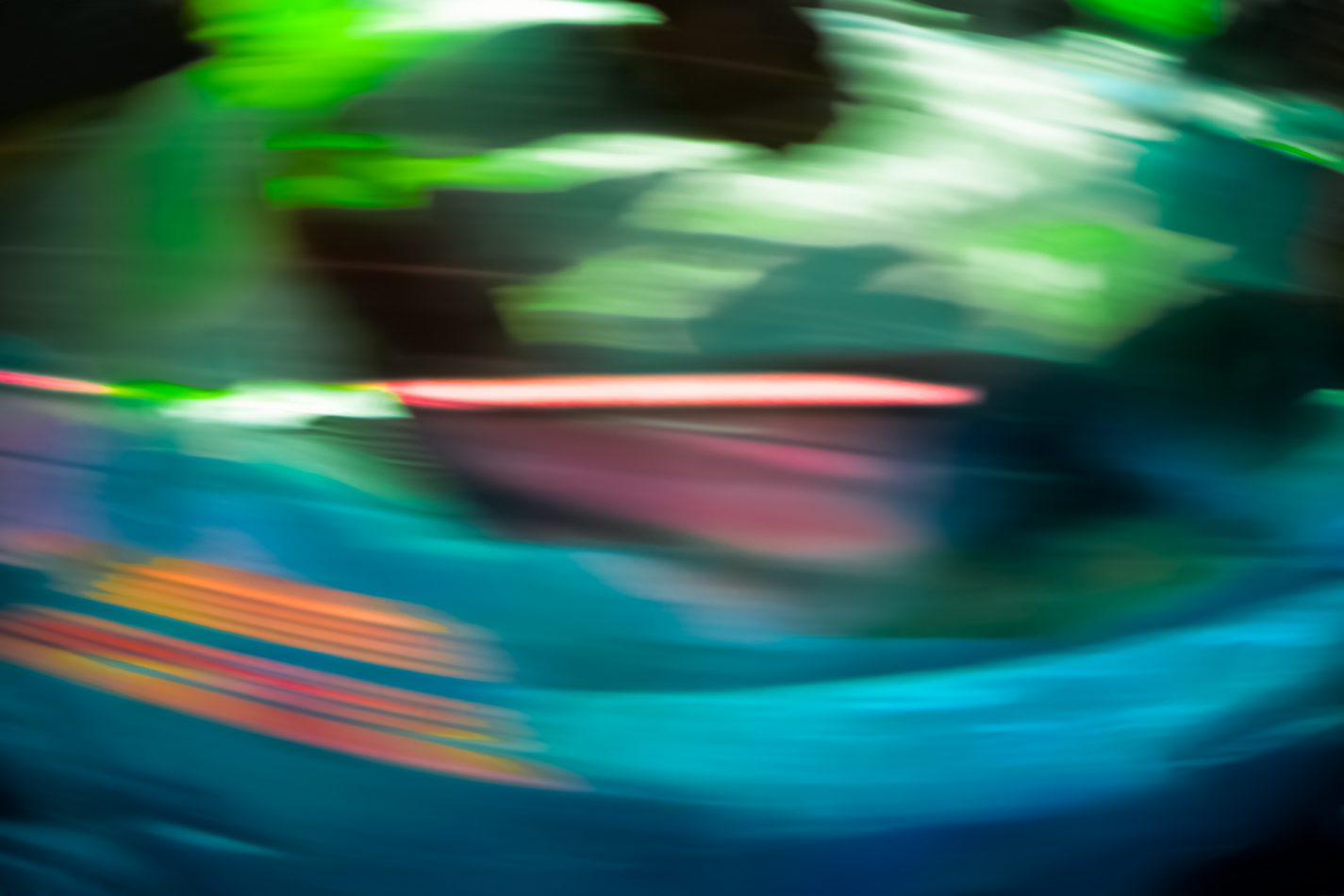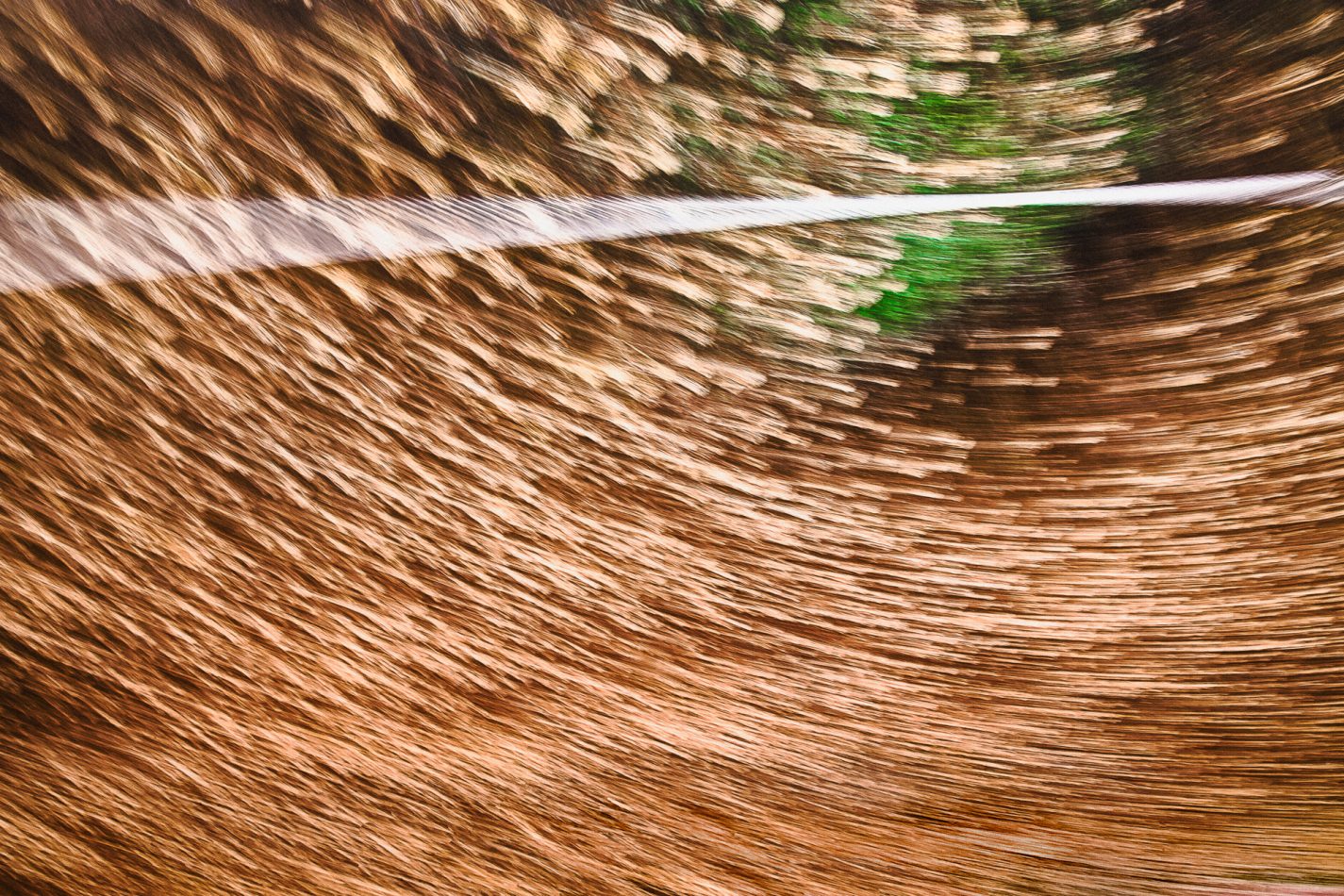Dottie Campbell’s “aha! moment in art” occurred as a result of a kindergarten homework assignment she “just couldn’t do.” Her mom came to the rescue.
“My mother, who majored in art history in college and archaeology in graduate school and loved to paint, took out an encyclopedia and opened it to a photograph of a squirrel and explained how to look at a photograph and draw lines and shapes on a piece of paper and construct a squirrel,” recalled the Baltimore-based artist whose work is on view through June 1 at BlackRock Center for the Arts in Germantown.
“It was at that moment that I understood how to make my hand move while my eyes were looking. This was the first time I referenced a photograph to create an artwork,” she added.
Campbell’s creative proclivities were nurtured. Her mother would take her and her sister Mary “on painting expeditions in the woods behind our house and sometimes she would set up still lives in the breakfast room that we all could paint together. Mary and I had our own sets of oil paints at an early age and my mother bought us primed canvas panels to paint on.” Their home “was filled with paintings and art books and talk about art,” and Campbell attended after-school painting classes. “I loved paint and I referenced nature, as well as photographs from all different sources, as inspiration for my paintings,” she said.
After growing up in New Jersey and Pennsylvania, Campbell studied visual arts at Goucher College in Towson. At the time, she said, “In my paintings, I was trying to understand the visual differences between painted realism and the realism inherent in a photograph. I felt the perfect realism would be the melding of the two art forms where one could not distinguish between paint and photograph.”
A post-graduation job at the college’s Art Slide Library inspired Campbell’s interest in the art of photography and photographic technique, which she proceeded to explore at the Maryland Institute College of Art (MICA) in Baltimore. There, she realized “my real love: photographing with color slide material and printing positive-to-positive using the Cibachrome process. My photographs in those days were of mysterious and brilliantly-colored landscapes.”

Campbell became “disenchanted with the photograph as an art form,” believing her “images needed (greater) size to express my ideas … I also missed using my hands directly to create art.“ As a result, she “set off on years of exploration in a variety of mediums, always using my own photographs to collect visual ideas for reference in other mediums,” among them, photorealistic drawings, fiber crafts with quilted photo realistic insets, pastel and cut Ultrasuede, and jewelry.
The images Campbell “used as reference” in her jewelry work gave her “exciting ideas for abstract photography.” By employing one of the first consumer-grade digital DSLR cameras (the Canon Rebel) along with digital technology and a large-format printer, she “could immediately see the results of my visual experimentation.”

In “Amped Up,” consisting of 17 24-by-36-inch pigment ink prints, Campbell said she used “camera movement to abstract the photographs I capture.” All the photographs were “abstracted and energized by my Camera-Movement-Capture (CMC) technique.” CMC, she explained, involves slow shutter speeds and “moving my camera in various ways “when I release the shutter.”
As such, she said, “I am no longer a passive recorder of reality. I can imprint my own creative elements into the photographs — obscuring detail, altering form, creating textural detail and patterns of movement. In becoming physically involved in the photographic process at the outset, I can record my emotional response to the compositions I photograph.”
Campbell sees these photographs as “a more complete impression of the reality I find around me. Now when I photograph, I become a performance artist, a choreographer, a painter and a creator in the photographic realm.”
“Visual artists create art that is related to their lives, perceptions and experiences. I realized that the photographic art in this exhibition is analogous to the fast pace of my own life,” she added. “The direct connection of photography to reality is important to me and so I continue to use photography as my primary medium. Using camera movement capture, I can create painterly photographs that retain their inherent connection to reality.”
[foogallery id=”39445″]
Campbell intends to keep moving and experimenting in multimedia, but is unsure whether she will continue “in the aesthetic mode of ‘Amped Up.’” Her next “artistic journey” may be “ to meld paint with photograph and discover that perfect realism I imagined when exploring reality at Goucher College. Or, I may return to my collection of politically-motivated series.” That, she said, “will depend on what’s happening in the world and whether I want to engage or retreat.”
Blackrock’s Gallery Director Anne Burton said that Campbell’s work stood out among the proposals submitted to the center’s annual call for entries. “Visitors will enjoy the experience of viewing each of the colorful prints while also contemplating what the original subject might have been and how Campbell might have been moving her body and her camera in order to capture unusual compositions filled with layers of shapes, values, hues and patterns,” she said.
Dottie Campbell’s “Amped-Up” is on view through June 1 in the Kay Gallery at BlackRock Center for the Arts, 12901 Town Commons Drive, Germantown. Hours are Monday through Saturday, 10 a.m. to 5 p.m. Admission is free. Call 301-528-2260.